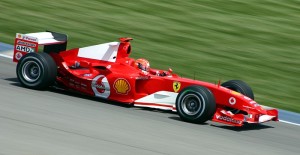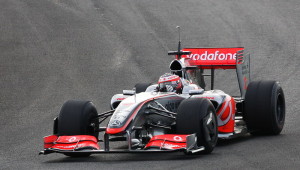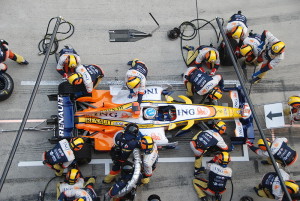How Has Formula One Evolved Since 1950?
 The first Formula One season took place in 1950. In more than 65 years, the sport has changed a lot. It’s now faster, safer, and more popular than ever before. The sport is still changing, however, with the organization and drivers trying to find a balance between speed and safety. When Formula One began, not even helmets were compulsory. Today, there are many rules and regulations on safety and fair play within the sport. Vehicle design has changed dramatically too, with a focus on aerodynamics, as well as engines. Check out how Formula One has changed over the years and continues to move forward.
The first Formula One season took place in 1950. In more than 65 years, the sport has changed a lot. It’s now faster, safer, and more popular than ever before. The sport is still changing, however, with the organization and drivers trying to find a balance between speed and safety. When Formula One began, not even helmets were compulsory. Today, there are many rules and regulations on safety and fair play within the sport. Vehicle design has changed dramatically too, with a focus on aerodynamics, as well as engines. Check out how Formula One has changed over the years and continues to move forward.
Rules and Regulations
One of the things that have seen change over decades of F1 is the rules and regulations. In the 1950s, little thought was given to the safety of the drivers or the sport’s spectators. Some of the first rules of the sport set out engine specs. The maximum sizes were 1500 cc for engines with a compressor or 4500 cc for normally aspirated engines. The compulsory use of helmets was another early rule. But the helmets wouldn’t have been any use today, or even then. As the sport grew, more regulations were put in place to make it safer. Rules had to evolve along with vehicle designs, and they are still catching up. Today, the F1 organization is doing its best to make the sport safer than ever.
Clothing and Safety Gear
Some of the most important ways to keep drivers safe in Formula One involves clothing and safety gear. The helmets of the 1950s would barely have protected anyone. The materials weren’t anything special, and they offered little to reduce impact. The first real safety measures weren’t introduced until 1960. Fireproof suits were only recommended in 1963. The first full-visor helmet was worn in 1968. Today, there are many rules about both clothing and helmets. All materials used are flame retardant, from bonded Kevlar thread to the specialist Nomex material used for suits. Helmets must be authorized by the FIA and meet strict safety regulations.
Pit Stops
One of the fascinating things to have changed over the years is the pit stop. These stops are essential for the safety and efficiency of the vehicle, and today they are extremely fast. But it hasn’t always been that way. Only a few people would have worked on the car, and it took over a minute for the vehicle to set off again. One of the reasons pit stops are so fast today is that refueling during the race was banned in 2010. But even before then, they took between just six and twelve seconds to complete.
Car Design
Of course, the vehicles themselves have changed a lot. When Formula One began, the focus was on the speed of the car. But as it has evolved, the aerodynamics of the vehicle has become much more important. Of course, safety has also had a significant influence. Even today, safety is changing vehicle design. In 2017, a new device will be introduced to help improve head protection. It will leave the cockpit of the vehicle open.
Formula One has changed a lot in the years since it began. It’s sure to continue to change as the FIA aim to make it safer.


Wonderful evolution!